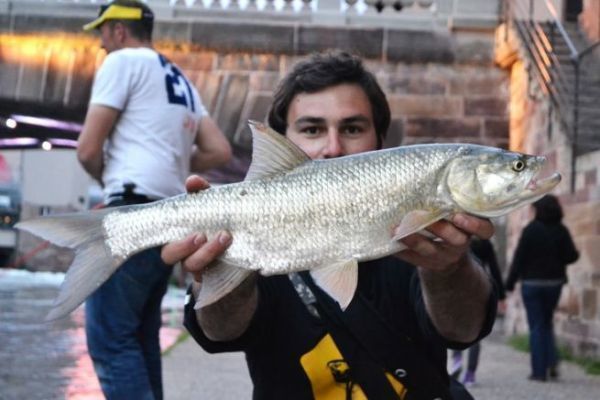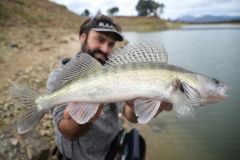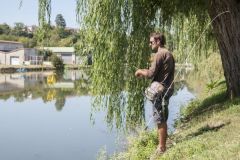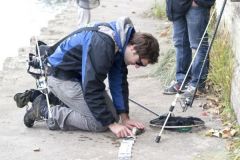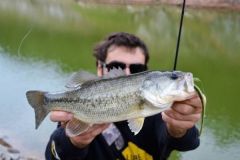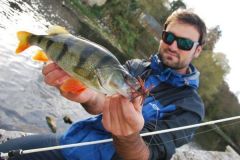Silent decoy!
On the whole, the line to follow when tackling fearful or educated fish is to use less noisy, more natural lures, not emitting too many vibrations that arouse the suspicion of predators.
Predators are receptive to the strong vibratory and visual signals emitted by our decoys.
Carnivores possess a range of information-receiving devices that enable them to locate and attack their prey precisely.
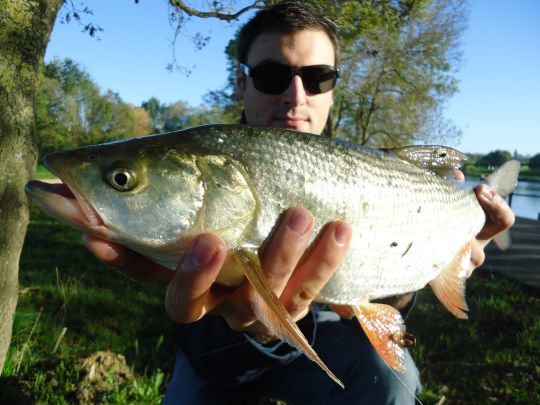
In particular, asps use their eyesight to hunt and target their prey. In the case of educated predators, or at least those that are highly solicited, we have noticed that lures emitting too strong stimuli no longer attract predators to them, but rather have the opposite effect. Carnivores become accustomed to signals that are too strong, too artificial and assimilate them with danger. They no longer attack these imitations, which they no longer regard as appetizing prey, but as lures and traps.
The sounds emitted by our lures, particularly the rattling of beads, are among the (sound) signals that fish are wary of. You should therefore use silent lures and swimbaits and avoid overly violent sound signals.
Beads should be avoided when stalking difficult fish, especially beads with high-pitched, high-frequency sounds that are not natural and normal in water.
Stick to natural signals. Lures containing glass beads or small metal balls should be avoided.
Natural colors and silhouettes
In addition to sound, visual cues are also important.
Realistic colors should be chosen to imitate the prey present. In the case of asp, you'll need shiny, transparent "white fish" coloured lures (bleak, small chub...).
Flashy, high-contrast colors should be avoided, especially in clear waters.
Keep these colors in the boxes for use in very murky waters. Metal lures such as spinners and wobblers are very good, as they are silent. Their silhouette and shape are not very realistic, but the signals they emit make them attractive and relatively natural.
Their drawback is that these lures can't be reeled in quickly. The spinning lure spins too much and the undulating lure stalls. The latter should therefore be reserved for drifting in strong currents, where these lures will work almost on their own. The shape of the lure should also be taken into consideration.
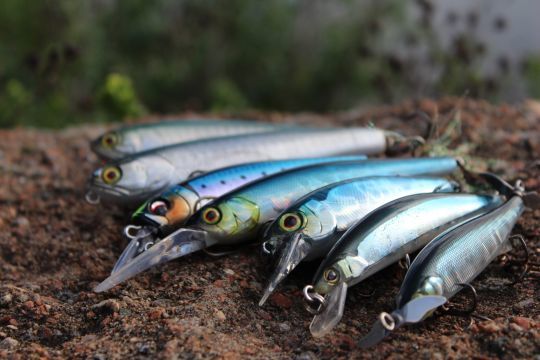
Swimming fish are very imitative and detailed. Minnows and jerkbaits, with their pisciform, hydrodynamic silhouette, don't displace too much water and imitate perfectly the shapes of the prey coveted by the asp. Blades and casting jigs can also be used.
These little-used lures emit numerous signals without noise. Their density means they can be cast a long way out to seek out asps offshore, behind a bridge pier for example.
Downsizing
I regularly talk to you about "downsizing". This term literally means "downsizing" the lure.
This is a Japanese approach to luring wary or educated fish by lowering the size of the lure. As with noisy lures, lures that are too large emit too much vibration or water displacement to arouse the distrust of predators.
It can be a key to fishing for this fish, especially when chasing fry along the edges. Instead of using lures of the usual size for asp (8 to 10 cm), we'll use small or even very small lures (4 to 7 cm).
This approach enabled me to catch several asps where other anglers had no bite at all. Like in Angers, on the Maine river, where I caught several asps on the tiny fry 38. A tiny lure measuring just 38 mm, but favoured by fish of almost 60 cm.
If you look closely, the asp regularly hunts in small fry balls and offering a micro lure can be very relevant. It's important to choose your lure carefully, as the smaller the lure, the more likely it is to stall and saturate, especially when brought back very quickly.
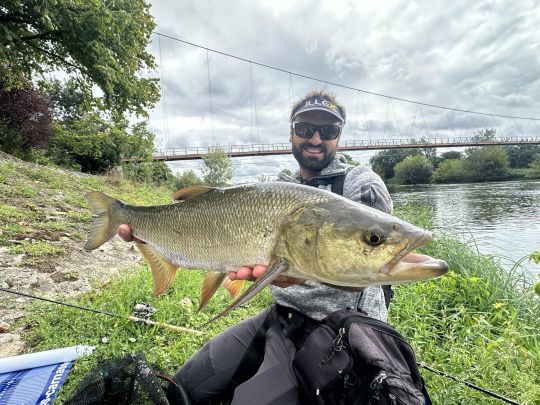
Minnows and jerkbaits, originally designed for large trout, are ideal for this purpose, as they were designed to swim perfectly even in very strong currents. If the hooks are too thin, replace them to prevent the asp from twisting them on contact.
Simple, strong iron hooks, again for larger trout, can be very useful.
Below the surface
Finally, the last rule to remember when stalking wary or difficult asps is to avoid floating surface lures.
It's best to use sub-surface lures, i.e. those that swim just below the water film.
Once again, we try to ensure that the signals emitted by the lure are not too powerful. In the latter case, it's important not to agitate the surface of the water too much.
What's more, difficult fish are often perplexed about attacking a lure moving on the surface. They may be attracted by the lure, follow it, but not follow through with an attack.
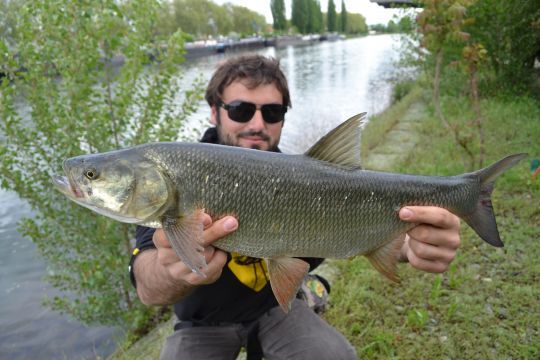
Sub-surface lures are easily spotted by asps without arousing their suspicion. Sub-surface lures include lipless minnows, sinking pencils and minnows with a small lip almost perpendicular to the body of the lure.
Quickly reeled in with the rod down, these lures will catch marauding asps, focusing on bleak, which are often found close to the surface.
The equipment headache
When using silent, natural lures, no special combo is needed to tackle asp.
A 2.10 m to 2.40 m rod with M to MH power allows you to cast far and tackle big fish, even in strong currents.
Rods like The Artist S225MH Black Ops are excellent in this area. The reel should be a size 2500 to 3000, with a high retrieve ratio, to bring the lure in quickly.
The brake needs to be particularly well adjusted, as the touch is very violent and it's not uncommon for some to break right off the touch. I use a Shimano Stradic 3000 or a Daiwa Caldia. Both are fitted with PE 0.8 or PE 1 braid (15 to 17/100). The choice of braid (over nylon or fluorocarbon) is dictated by the need to cast far. The leader will be made of fluorocarbon from 12 to 16 lbs.
I often use the 12 lbs (5.5kg), which is more discreet and doesn't restrict the lure's swimming action, making it ideal for fishing wary fish.
For downsizing fishing, the use of small and light lures requires the use of lighter equipment. The rod will have a power of L to ML and a length of 2 to 2.20 m.
Remember that the aim is to lure the asps to the edge, focused on the fry, and not to fight a monster in full flow 40 m from the bank...

I'm using an Illex Pepper S2102ML Akoya Pearl for this exercise. The reel will be size 2000 to 2500 with high ratios, fitted with fine PE 0.6 braid (13/100). The leader will be fluorocarbon 8 to 12 lbs, or even less (6 lbs) if the fish are not too big (under 50 cm).
In addition to the rod and reel, we strongly recommend using a wide landing net. Fish-grips, also known thanks to the advent of streetfishing, should be avoided at all costs and are out of date. Use a pair of pliers to calmly unhook hooks. As for the rest, a good pair of sneakers, polarized glasses and a camera, and you're ready to go.
A fish to discover and rediscover
The asp is a formidable and spectacular fish. Whether on the Loire or the Rhine, if it's recalcitrant and not biting much, you should be able to pull it off by following these few rules. If you haven't already done so, I invite you to try your hand at luring this superb fish, a cyprinid unlike any other but just as wary. Of course, remember to release your catch with the respect it deserves.

 /
/ 

